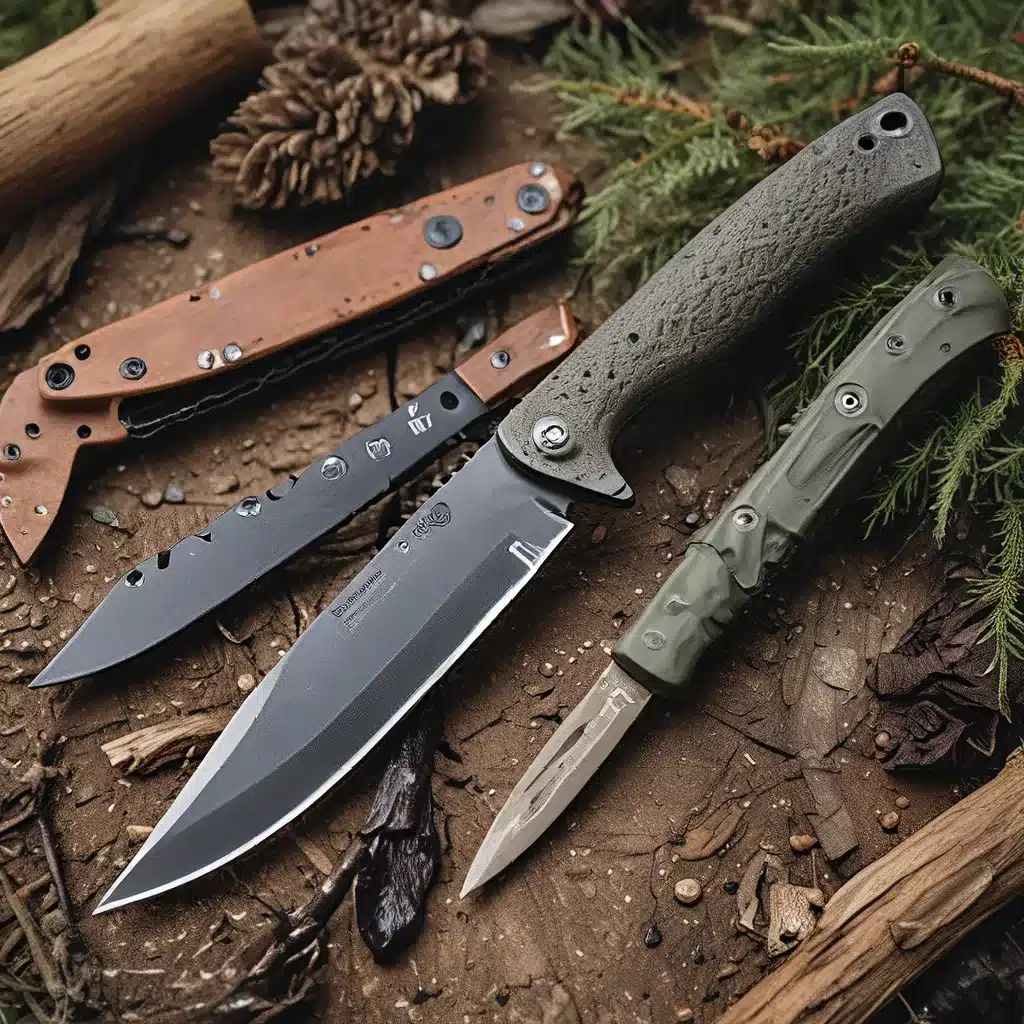
As an avid outdoorsman, I’ve spent countless hours scouring the market for the ultimate survival knife. Whether you’re an experienced wilderness explorer or a novice preparing for your first backpacking trip, having the right knife can make all the difference between life and death. In this comprehensive guide, I’m sharing my hard-earned insights to help you find the best survival knife for your needs.
The Importance of a Solid Fixed Blade
When it comes to survival knives, the debate between folding knives and fixed blades has raged on for years. While I’ll admit that a good folding knife can serve you well in everyday carry situations, in a true survival scenario, you want a knife that’s ready to go the minute you need it. That’s where a solid fixed blade shines.
The joint or pivot of a folding knife is a inherent weakness, and the rough abuse a survival knife endures can quickly compromise its integrity. A full tang design, where the blade extends the entire length of the handle, provides the strength and durability you need for tasks like chopping, prying, and batoning. Plus, with a fixed blade, you don’t have to worry about the knife locking up or becoming unstable, which can be a real lifesaver when seconds count.
Choosing the Right Steel
Once you’ve decided on a fixed blade, the next consideration is the blade steel. Now, I know there’s a lot of complicated metallurgy that goes into knife steels, but let me break it down for you in simple terms. When it comes to survival knives, you don’t want to cheap out.
For everyday carry (EDC) knives, stainless steel is a great choice because it’s low maintenance and resistant to corrosion. But for a survival knife that’s going to be put through the wringer, you want a carbon steel alloy. These steels are tougher and will hold an edge better, even after sustained abuse.
The most popular carbon steel used in survival knives is 1095, or slight variations thereof. It’s a great balance of toughness, edge retention, and ease of sharpening. If you’re worried about corrosion, look for AUS8, 440C, or 420HC stainless steel blades, which offer a bit more rust resistance while still providing solid performance.
Finding the Ideal Blade Size
Now that we’ve covered the basics of blade steel, let’s talk about size. When it comes to survival knives, bigger isn’t always better. Sure, you might be tempted to go with a massive 12-inch behemoth, but trust me, that’s more likely to become a hindrance than a helpful tool.
The sweet spot for most survival knives falls between 4 and 7 inches in blade length, with an overall length of around 10 to 11 inches. This size range gives you the versatility to tackle a wide variety of tasks, from skinning small game to batoning through thick wood, without being so unwieldy that it becomes a burden to carry and use.
Anything longer than 11 inches starts edging into machete territory, which can be overkill for most survival situations. And a blade that’s too short simply won’t have the reach or cutting power you need when the going gets tough. It’s all about finding that perfect balance.
The Importance of a Sturdy Handle
While the blade is the star of the show, don’t underestimate the importance of a solid handle. After all, this is what you’ll be gripping and using to apply all that cutting and prying force. Cheap, hollow handles just won’t cut it (pun intended) – they lack the strength and durability to withstand the demands of survival situations.
Look for handles made from modern synthetic materials like Kraton, Micarta, G-10, or even dense rubber. These materials not only provide exceptional grip and comfort, even in wet or cold conditions, but they’re also virtually indestructible. Avoid metal handles, as they can get uncomfortably cold in the wilderness and don’t offer the same level of traction.
Textured grips and a lanyard hole are also great features to have, as they’ll help keep the knife securely in your hand, even when things get messy. And if you find a model with a blunt end, even better – that can come in handy for pounding and hammering tasks.
Top Survival Knife Recommendations
Alright, now that we’ve covered the key criteria for choosing a great survival knife, let’s dive into some of my top recommendations:
| Knife | Blade Length | Overall Length | Blade Steel | Handle Material | Price |
|---|---|---|---|---|---|
| Ruger Bravo Fixed Blade Survival Knife | 5.5 inches | 10.5 inches | 1095 Carbon Steel | Glass-Reinforced Nylon | $59.99 |
| Gerber StrongArm Fixed Blade Knife | 4.8 inches | 9.8 inches | 420HC Stainless Steel | Textured Rubber | $49.99 |
| Ontario RAT-7 Fixed Blade Knife | 7 inches | 12 inches | 1095 Carbon Steel | Micarta | $79.99 |
These are just a few of my top picks, but the market is filled with a wide range of high-quality survival knives to choose from. Remember, the “best” knife is the one that fits your specific needs and preferences, so don’t be afraid to do your own research and try out a few different options.
Wrapping Up
Choosing the right survival knife is a critical decision that can quite literally mean the difference between life and death in a dire situation. By focusing on key factors like blade steel, size, and handle material, you can ensure you’re equipped with a reliable, high-performing tool that’s up to the task.
And don’t forget, once you’ve found your perfect survival knife, it’s important to take good care of it. Keep it sharp, clean, and dry, and it will serve you well for years to come. Happy (and safe) adventuring!


